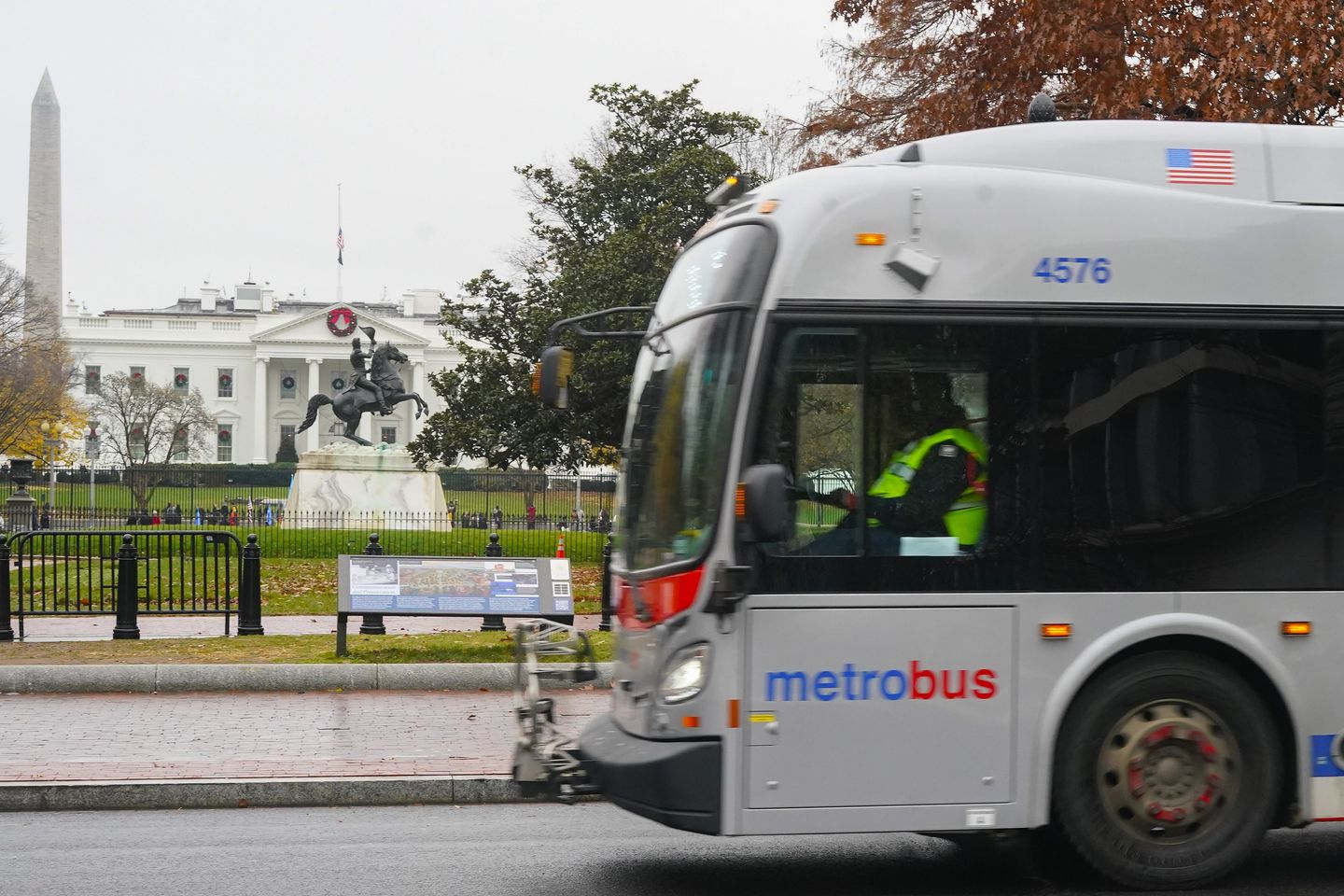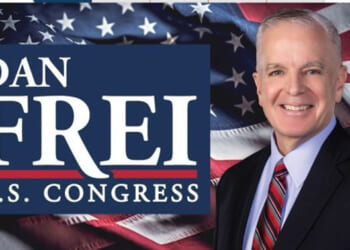
Major cuts to public bus and rail services are looming in cities from Chicago to San Francisco, as combined route reductions and fare hikes suggest a post-pandemic “death spiral” in ridership and revenue.
Transportation insiders interviewed by The Washington Times cited inflation, crime, remote work arrangements, the expiration of $70 billion in pandemic relief funds and the Trump administration’s frugality as factors making the downshift inevitable.
A recent Bloomberg News analysis found the nation’s largest mass transit systems have a $6 billion budget deficit. At the same time, rural systems in states such as North Dakota and Oregon are encountering roadblocks as they request more state and federal funding to offset rising maintenance and payroll costs.
“With [President] Trump’s return to office, the approach has shifted dramatically,” said George Carrillo, chief operations officer for the Umpqua Public Transportation District, a financially struggling system in rural southern Oregon.
“Agencies that were relying on the possibility of continued federal subsidies from [former President Joseph R.] Biden’s policies now find themselves adjusting to a fiscal reality where such aid seems unrealistic. This abrupt change has left agencies scrambling to address their deficits through service cuts or fare hikes, accelerating the financial challenges already exacerbated by the pandemic,” Mr. Carrillo said.
The Trump administration said in a statement to The Times that mass transit systems are on their own.
“Americans moved on from the pandemic years ago, and it’s high time for state and local governments to get their finances in order,” said Kush Desai, a White House spokesman.
According to the latest figures from the Department of Transportation, public transportation delivered 7.59 billion riders from January to March, roughly 79% of the 9.56 billion tallied during the same period in 2019.
Other large cities planning budget cuts as ridership lags include New York, Dallas and Washington, D.C.
The Washington Metropolitan Area Transit Authority will remove 500 Metrobus stops in June. The cuts target spots with low ridership, those with no pedestrian access and those with a second stop less than 660 feet away.
The D.C. subway system is something of an outlier: Metro ridership last year surged to its highest level since 2020, as more workers return to the office. However, rail ridership is still only 70% of pre-pandemic levels.
Further north, New York’s Metropolitan Transportation Authority will cut $3 billion from its budget by 2029 rather than borrow money to pay for system upgrades. The system transports nearly half the nation’s public transit riders.
The Trump administration has threatened to withhold funding from the MTA unless it addresses reports of increased crime on depopulated subways since the pandemic.
“Trust in the system is essential, and transit agencies must not only secure their infrastructure but also ensure that riders feel safe enough to continue using public transportation,” said Aaron Shavel, an analyst at the Alliance for Innovation and Infrastructure who has worked as a civil engineer on MTA projects. “Public transit systems are inherently unprofitable, but that does not mean they should be neglected.”
Elsewhere, political leaders are haggling over how to address the crisis.
Pennsylvania Gov. Josh Shapiro, a Democrat, redirected more than $150 million in federal highway funds to sustain bus and rail service for the Philadelphia area in November.
Since then, Republicans in the Pennsylvania General Assembly have blocked a Democrat-led bill to increase transit funding.
“Let me just say, we face a dire situation for mass transit agencies all across Pennsylvania, from Pittsburgh to Philly and rural communities in between,” Mr. Shapiro said in April.
Pennsylvania House GOP Leader Jesse Topper has proposed partially privatizing Philadelphia’s public transportation to better address “the problems of a system chronically in crisis.”
“Privatizing busing operations has been successfully implemented for commuter bus operations in Maryland and for busing services in major cities like Denver,” Mr. Topper, who represents a rural district, said last month. “In addition, Americans are increasingly reliant on private ride-share services to manage transportation needs.”
In Oregon, Democratic lawmakers have proposed increasing the state’s transit payroll tax from 0.1% to 0.18%. The plan would raise an estimated $269 million over each two-year budget cycle, but transit officials say it’s not enough.
According to the Umpqua Public Transportation District’s Mr. Carrillo, U.S. public transportation systems have raised fares by 10% to 20% since 2019 and ridership is down by as much as 40% in some areas.
“The term ‘death spiral’ is increasingly used to describe the current state of many public transit systems, and there’s evidence to suggest that some agencies are indeed caught in this cycle,” said Mr. Carillo. “While some recovery is possible, it is unlikely that public transportation will fully recapture pre-pandemic usage unless there’s a major cultural or economic shift that brings workers and activities back into urban centers.”
According to analysts at Department of Transportation-sponsored university transportation centers, privatization could relieve taxpayers from financing soaring mass transit costs.
“Privatization of the public transportation system may be the right way to do it,” said Harry Teng, a civil engineer who directs the Railroad University Transportation Center at the public University of Nevada, Las Vegas.
Steve Polzin, a senior adviser at the TBD National University Transportation Center, noted that public transit ridership has declined among young adult workers, traditionally its key demographic, for the past 20 years.
He pointed to online commerce, increased car ownership and a surge in electric scooters, bikes and Segways as additional trends making a turnaround unlikely.
“Urban conditions will also likely play a role in future ridership trends,” said Mr. Polzin, a transit system veteran who served as a Department of Transportation official in the first Trump administration. “Fear of crime or simply being uncomfortable in situations where there is exposure to individuals with drug, alcohol, or mental health challenges or who are otherwise disrespectful of other passengers can discourage ridership.”
He said the Biden administration’s $70 billion in public transportation far exceeded “a replacement of the lost fare revenues due to declining ridership during COVID.”
“Many places have foregone service cuts and continued to survive on their federal resources left from the COVID supplemental federal support,” Mr. Polzin added. “The real impacts will start to become apparent in the next year or two.”
For more information, visit The Washington Times COVID-19 resource page.












